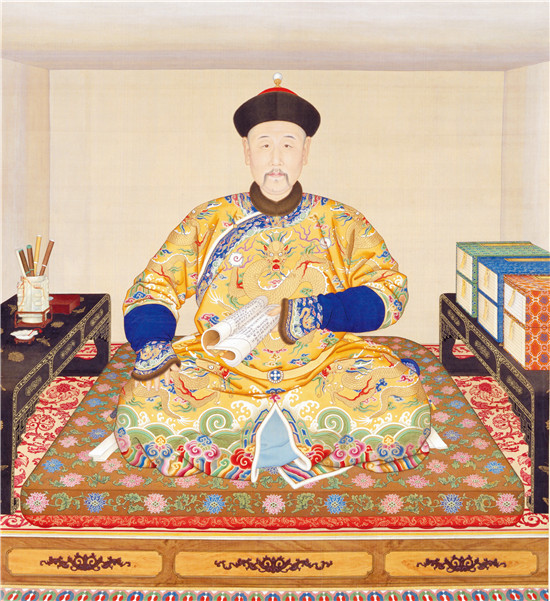 |
|
Emperor Yongzheng. [Photo provided to China Daily]
|
On display is a painting by the emperor himself, depicting magnolia and peach blossoms. The images are simple and the colors quiet. A few lines penned by the emperor on the upper right side say the painting was made during his tour of Longjing in Hangzhou, capital of what is now Zhejiang province. "Mother saw it and loved it. So I have had it mounted for her," Qianlong wrote. That was in 1762, during his third trip to the south, a trip the empress dowager also went on.
The emperor also tried to memorize the deeds of his father, Emperor Yongzheng - or to emulate them in his own way. Yongzheng, today regarded as the hardest-working Qing emperor, seems to have made "All work and no play" his personal motto, sleeping no more than five hours a day, according to the official record.
And Yongzheng, like his father Emperor Kangxi, paid great attention to the building of levees along the Qiantang River that runs through Hangzhou. But it was only during the late reign of Qianlong that the nagging issue was put to rest.
Also during that third trip of his in 1762, Qianlong wrote a long article offering his own thoughts on building levees, based on field trips. Later he ordered the inscription of this article on a stone stele standing in a temple dedicated to the water god in Haining county, about 60 kilometers from Hangzhou.
"By that time, the other side of the stele bore another inscription, of an article penned by Emperor Yongzheng, also about building levees," Le says.
Today the stone stele is still there, with the writings on both sides telling a story about continuous effort and lasting memory.


























 Raymond Zhou:
Raymond Zhou: Pauline D Loh:
Pauline D Loh: Hot Pot
Hot Pot Eco China
Eco China China Dream
China Dream China Face
China Face






